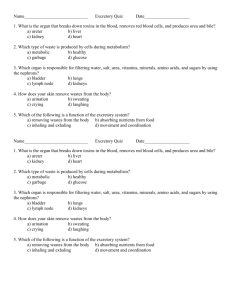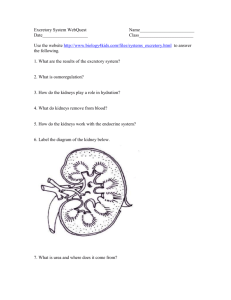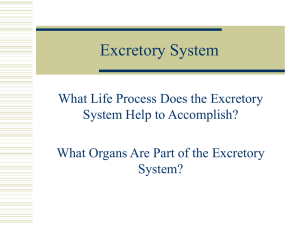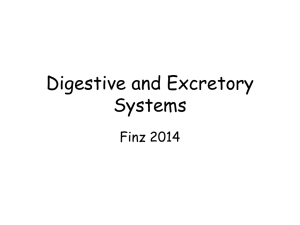Excretion
advertisement
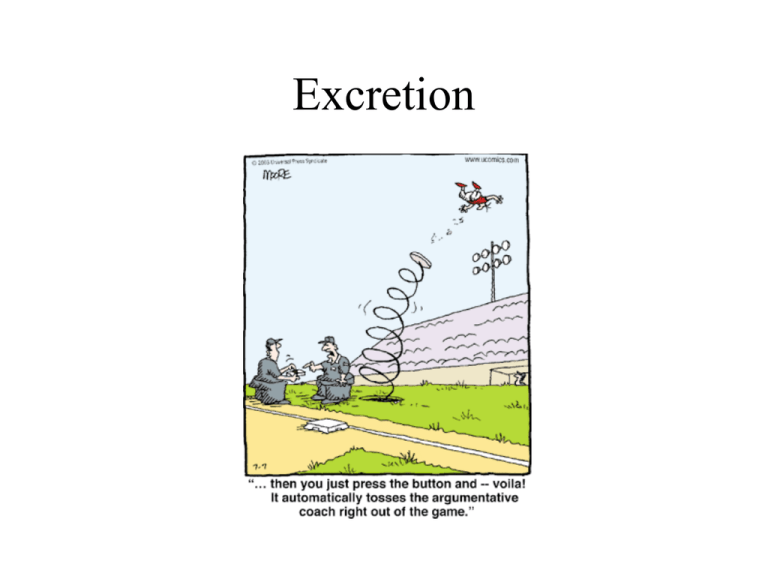
Excretion Excretion Removal of metabolic wastes Metabolism: Chemical reactions that build up, break down or change compounds Macromolecule Metabolism used Cellular Respiration Carbohydrates C H O Stored Glycogen Lipids product ATP waste CO2, H2O Macromolecule Metabolism Stored Lipids C H Fat O As lipids (hormones, cell parts, etc. ) Used Converted back to carbohydrates waste “Ketones” Macromolecule Metabolism Used Protein C H O Enzymes, Hormones, Chaperones, Cell parts, etc… N Converted to In the liver Muscle waste (ATP use) Lipids, Carbohydrates. (C – H – O) Heat, Other wastes What happened to the Nitrogen? Nitrogenous Waste • Nitrogen from protein “deamination” is in the form of ammonia NH3 (Very Toxic) Ammonia Excretion Ammonia Uric acid Urea The Liver • Major Vital organ • Processes most macromolecules and ingested toxins (including medicines and alcohol) • Blood and lymph vessels carry materials absorbed in the small intestines directly to the liver for processing • Doesn’t remove any wastes, just processes things so they may be removed. Excretory organs Skin sweat H2O, urea, salts Lungs breath CO2, H2O Liver doesn’t remove wastes detoxifies and deaminates Urinary system = kidneys, ureter, bladder, urethra make urineH2O, urea, salts and surplus stuff (vitamins, sugars, etc.) Note = this does not include the digestive system Feces are not really excretory (its not a metabolic waste) The Urinary System ADRENAL GLAND – not excretory KIDNEY URETER URINARY BLADDER URETHRA The Kidney The Kidney Bean URETER The microscopic, functional unit of the The Nephron kidney. There are millions of these in each kidney How to make URINE: 1. Filtration: All dissolved material leaves blood. This occurs here 2. Reabsorption: “good” material returns to the blood This occurs here What is left over is…URINE!

